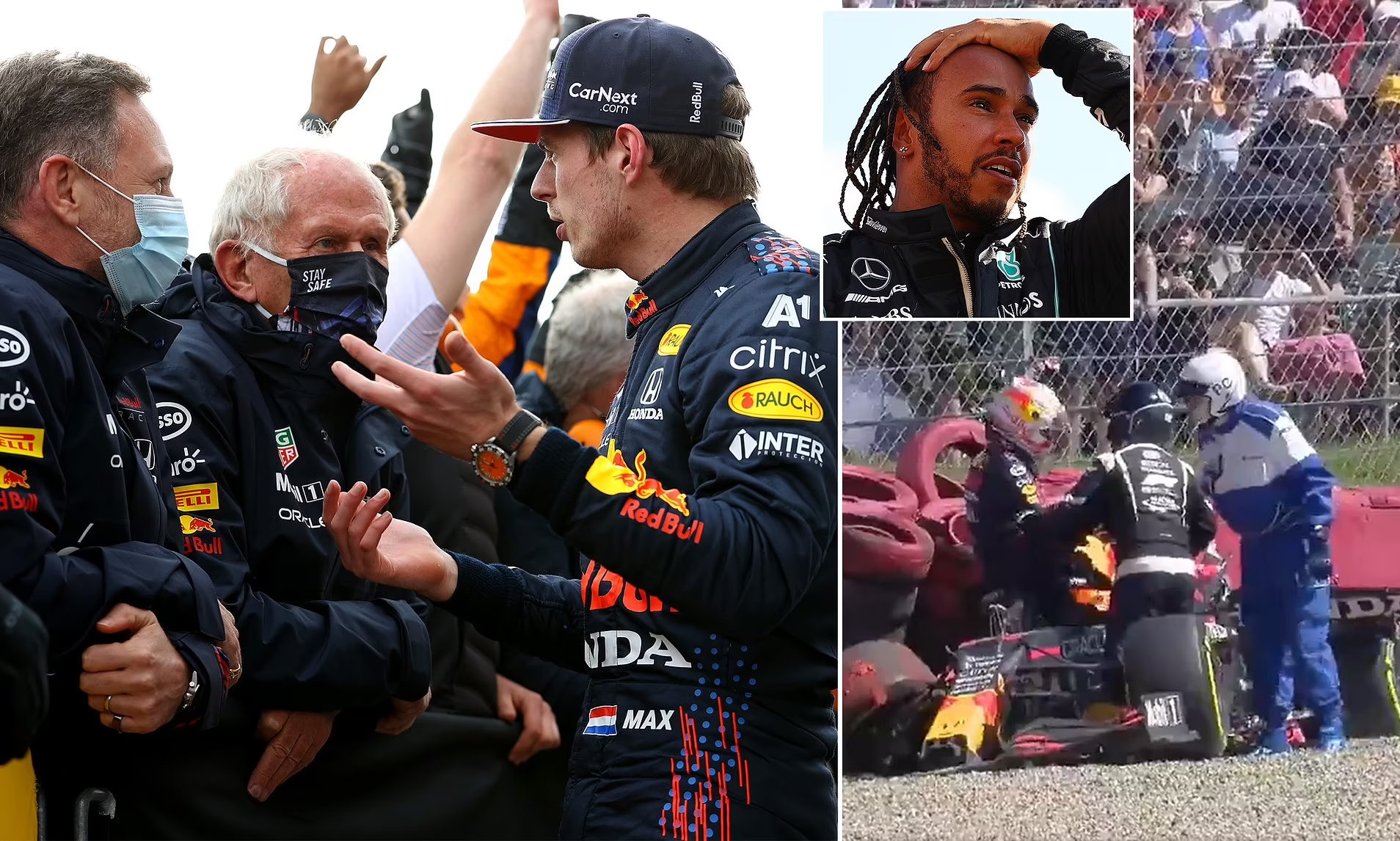
Helmut Marko Reveals the Culprit Behind the Verstappen-Hamilton Collision in Hungary
The high-stakes world of Formula 1 often sees dramatic moments that capture the attention of fans and pundits alike. One such moment was the intense clash between Max Verstappen and Lewis Hamilton at the Hungarian Grand Prix. The incident, which took place at the Hungaroring, has been the subject of much debate and analysis. Helmut Marko, Red Bull Racing’s advisor, has recently weighed in on the matter, offering his perspective on who was to blame for the collision.
The Hungarian Grand Prix, known for its tight corners and challenging layout, was the scene of a dramatic incident that saw Verstappen and Hamilton come together in a way that significantly impacted the race. As both drivers vied for position, their cars made contact, leading to immediate speculation and controversy over who was at fault. The aftermath of the collision saw Verstappen’s car suffering significant damage, affecting his performance for the remainder of the race.
Helmut Marko, a prominent figure in the Red Bull Racing team, did not shy away from expressing his opinion on the incident. In his analysis, Marko pointed out that the clash was inevitable given the aggressive racing styles and competitive spirits of both drivers. However, he emphasized that, in his view, the primary responsibility for the incident lay with Lewis Hamilton.
Marko highlighted several key factors in his assessment. Firstly, he pointed to Hamilton’s approach to the corner where the collision occurred. According to Marko, Hamilton took a line that left Verstappen with very little space, making contact almost unavoidable. He argued that Hamilton’s positioning was overly aggressive, especially considering the high speeds at which the cars were traveling and the potential risks involved.
Furthermore, Marko suggested that Hamilton’s experience and tactical awareness should have guided him to make a more cautious maneuver, particularly given the close championship battle between the two drivers. He noted that while aggressive driving is a part of Formula 1, there is a fine line between assertiveness and recklessness. In this instance, Marko felt that Hamilton crossed that line, leading to the unfortunate outcome.
Marko’s comments also touched on the broader context of the Verstappen-Hamilton rivalry, which has been one of the defining narratives of the current Formula 1 season. The intense competition between the two drivers has produced thrilling races but has also heightened tensions on the track. According to Marko, this particular clash was a manifestation of the fierce battle for supremacy that has characterized their interactions throughout the season.
Despite Marko’s clear stance, the incident has been viewed differently by various stakeholders within the sport. Mercedes, Hamilton’s team, defended their driver’s actions, suggesting that the collision was a racing incident with no single party to blame. They argued that both drivers were pushing to the limit, and such incidents are an inherent part of competitive racing.
The stewards at the Hungarian Grand Prix conducted a thorough investigation into the incident. After reviewing the evidence, they decided not to impose significant penalties, reinforcing the idea that the collision was a result of hard racing rather than a deliberate or negligent act by either driver.
The clash between Verstappen and Hamilton in Hungary has undoubtedly added another chapter to their intense rivalry. It has also sparked wider discussions about racing ethics, driver behavior, and the fine margins that separate competitive driving from dangerous maneuvers. As the Formula 1 season progresses, the dynamics between these two top drivers will continue to be closely watched, with fans and analysts eager to see how their rivalry unfolds.
In conclusion, Helmut Marko’s perspective on the Verstappen-Hamilton clash in Hungary provides a clear and unambiguous view on who he believes was at fault. His analysis underscores the complexity and intensity of Formula 1 racing, where split-second decisions can have significant consequences. Whether or not one agrees with Marko’s assessment, the incident serves as a reminder of the high stakes and fierce competition that define the sport.